Duckfeet and Blundstone are two popular boot brands known for their comfort and durability. But which one is better?
In this comprehensive guide, we’ll compare the key features of Duckfeet and Blundstone boots to help you decide which is the right choice for you.
A Brief Comparison Table
| Feature | Duckfeet | Blundstone |
| Material | Natural rubber | Leather + TPU sole |
| Water Protection | 100% waterproof | Water-resistant |
| Traction | Excellent grip | Good traction |
| Break-In Period | None | 1-2 weeks |
| Style Variety | Only boots | Shoes and sandals too |
| Cleaning | Rinse off | Polishes and cleaners |
| Odor Resistance | Excellent | Moderate |
| Arch Support | Medium | Good |
| Pricing | Around $100 | Around $150 |
| Weather Suitability | Rain, snow, cold | Dry conditions |
| Sizing | Run large | Run large |
Overview of Duckfeet Boots
Duckfeet is a Danish footwear company that specializes in rubber boots. Their boots are 100% waterproof thanks to their rubber material. Duckfeet boots have a simple, minimalist design that comes in a variety of colors.
Some of the key features of Duckfeet boots include:
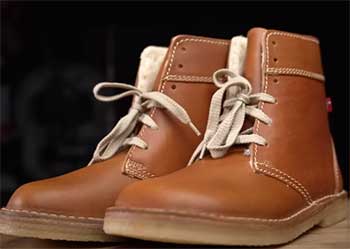
- Waterproof – Made from natural rubber, Duckfeet boots are completely waterproof. No water will get in even when walking through puddles or rain.
- Comfortable – The rubber material is flexible allowing the boots to mold to your feet. The insole is cushioned for shock absorption and arch support.
- Durable – Duckfeet boots are designed to last for years. The rubber exterior is resistant to cracking and damage.
- Traction – The thick rubber outsole provides great traction on slippery surfaces. The tread helps grip wet or muddy terrain.
- Easy to Clean – You can just rinse off Duckfeet boots to clean them. The simple design doesn’t have excessive seams or decorations where dirt can accumulate.
Duckfeet boots come in a few different styles including Chelsea boots, lace-up boots, and slip-on boots. They are more casual in design and available in both low and high lengths.
Overview of Blundstone Boots
Blundstone is an Australian footwear company known for their Chelsea style boots. Their boots feature leather uppers and a durable thermoplastic urethane (TPU) sole. Blundstone boots have a timeless, versatile look suitable for work or casual wear.
Here are some of the key attributes of Blundstone boots:
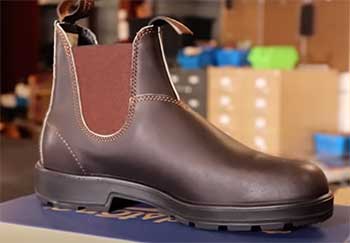
- Water-resistant – Blundstone boots are treated with a waterproof sealant to repel moisture. They can handle light rain but are not 100% waterproof like rubber boots.
- Comfortable – The leather upper conforms to your feet and the TPU sole provides cushioning and shock absorption. A removable footbed allows you to insert your own orthotics.
- Durable – Blundstone boots are built to last for years of regular wear. The leather upper can be maintained with polishing. The outsole is slip-resistant and long-lasting.
- Stylish – With their sleek Chelsea boot design, Blundstone boots easily transition from the worksite to the town. They have a classically rugged look.
- Supportive – Blundstone boots provide arch support and stability with their sturdy construction. The heel is engineered to reduce fatigue.
Blundstone boots are available in a wider range of styles including boots, shoes, and sandals. They come in both ankle and calf height options.
Also Read: Differences Between Blundstone 587 And 550 Boots.
Duckfeet And Blundstone Boots: Key Differences
Now that we’ve covered the basics of each brand, let’s directly compare some of the key differences between Duckfeet and Blundstone boots:
- Water Protection – Duckfeet boots are 100% waterproof thanks to their natural rubber construction. Blundstone boots are water-resistant but not fully waterproof.
- Weather Suitability – Duckfeet boots are ideal for rain, snow, and winter weather. Blundstone boots are more suited for dry conditions but can handle occasional light moisture.
- Outsole Material – Duckfeet boots have a rubber outsole while Blundstone boots have a TPU sole. The rubber provides better grip while the TPU is more long-lasting.
- Style Variety – Blundstone boots come in more styles like shoes and sandals. Duckfeet focuses specifically on boots.
- Break-In Period – Blundstone boots require some break-in time for the leather upper. Duckfeet boots have no break-in period.
- Cleaning – Duckfeet are easier to clean by just rinsing off. Blundstone boots require leather cleaners and polishes.
- Odor Resistance – The natural rubber of Duckfeet boots naturally resists odors. The leather of Blundstone boots can absorb odors over time.
- Arch Support – Both provide good arch support. Blundstone offers removable footbeds for custom orthotics.
- Pricing – Duckfeet boots are typically more affordable around $100 while Blundstone boots start around $150.
Duckfeet Boots Pros and Cons
Pros of Duckfeet Boots
- Completely waterproof and weatherproof
- Made from natural rubber that’s flexible and comfortable
- Good traction and shock absorption
- Easy slip on and off design
- Resist odors and growth of bacteria
- Low maintenance and easy to clean
- Very affordable pricing
Cons of Duckfeet Boots
- Limited style selection focused only on boots
- Not breathable, can cause sweaty feet
- Lack ankle support of higher boots
- Sizing can run large
- Rubber can cause squeaking noise
- Not suitable for extremely cold temperatures
Also Read: Differences Between Olukai And Rainbow Flip Flops.
Blundstone Boots Pros and Cons
Pros of Blundstone Boots
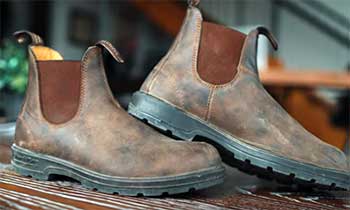
- Classic, stylish Chelsea boot design
- Water-resistant and durable leather upper
- Available in many styles like shoes and sandals
- Perforated designs for warm weather
- Removable footbeds accommodate orthotics
- Good arch support and stability
- Easy to resole and repair
- Versatile for casual and work wear
Cons of Blundstone Boots
- Not 100% waterproof
- Require break-in period
- Leather needs regular cleaning and maintenance
- Less slip resistance than rubber soles
- Not ideal for snow or heavy rain
- Run large in sizing
- Higher cost than Duckfeet boots
Duckfeet And Blundstone for Walking and Standing All-Day
Both Duckfeet and Blundstone boots provide good cushioning and arch support for walking and standing all day. However, there are some differences:
- Traction – The thick rubber outsole of Duckfeet boots grip surfaces better and prevent slips. Blundstone soles are also slip-resistant but not quite as grippy.
- Shock Absorption – The pure rubber construction of Duckfeet boots naturally absorbs impact. Blundstone also has good shock absorption but their leather upper is stiffer.
- Odor Resistance – Duckfeet’s rubber resists odors from sweat and bacteria growth over long use. Blundstone boots eventually absorb foot odors.
- Waterproofing – Duckfeet’s waterproof quality makes them ideal for walking in any weather. Blundstone boots can handle occasional moisture but wet feet over time can cause blisters.
Overall, the pure rubber material of Duckfeet boots make them a better choice than Blundstone for extensive walking and all-day standing. The natural rubber has better shock absorption and flexes with the feet.
Duckfeet And Blundstone: Style Comparison
Duckfeet and Blundstone boots cater to different aesthetics. Here’s an overview:
- Duckfeet – Duckfeet boots have a basic, unfussy look. Their minimalist, solid colored style works well for casual everyday wear.
- Blundstone – Blundstone boots have a sleek, ruggedly handsome Chelsea boot design. They lean more stylish and versatile for both work and play.
- Uppers – Duckfeet boots have a rubber upper while Blundstone uses leather. Leather looks more polished while rubber is sportier.
- Silhouette – Duckfeet has a rounder toe shape while Blundstone is pointier. Duckfeet has a bulkier look overall.
- Colors – Duckfeet boots utilize bright, playful colors. Blundstone offers classic black and brown plus some distressed variations.
- Accents – Duckfeet boots are void of decorative accents. Blundstone adds buckles, stitching and elastic goring for visual interest.
- Unisex Styling – Both brands offer unisex sizing and styling suitable for men and women.
So in summary, Duckfeet has a casual, fuss-free look focused on function over fashion. Blundstone has more refined styling that transitions effortlessly from work to weekend.
Also Read: How Carmina And Meermin Boots Stack Up?
Durability Comparison
Duckfeet and Blundstone boots are both highly durable choices. Here’s how they compare:
- Rubber vs Leather – The natural rubber of Duckfeet is extremely durable to cracking and damage. Leather scuffs over time but can be maintained with polishing.
- Outsoles – Duckfeet’s thick rubber is resistant to abrasions. Blundstone uses hardy thermoplastic polyurethane (TPU) that withstands heavy use.
- Construction – Both brands use sturdy stitching and glued soles. Duckfeet has no seams that can separate.
- Weather Resistance – Duckfeet’s weatherproof quality makes them last through years of rain and snow. The water-resistant leather of Blundstones degrades faster with consistent exposure to moisture.
- Resoling – Blundstone’s cemented construction allows them to be resoled multiple times. Duckfeet would need to be fully replaced when the sole wears down.
Overall, Duckfeet likely has a slight edge for longevity thanks to its seamless rubber design. But both are designed to provide years of wear with proper care.
Sizing and Fit Comparison
It’s important to consider sizing when choosing between Duckfeet and Blundstone boots:

- True to Size – Both tend to run slightly large but offer options for wider or narrower feet. Trying boots on is recommended.
- Break-In Period – Duckfeet boots have no break-in time and flex naturally. Blundstone boots take 1-2 weeks to fully shape to your feet.
- Wide Sizes – Blundstone offers more wide size options for wider feet. Duckfeet has fewer wide sizes.
- Inserts – Blundstone’s removable footbed works well with custom orthotics. Duckfeet’s fixed insole can’t accommodate inserts.
- Heel – Blundstone has a raised heel for better alignment. Duckfeet has a flat heel.
- Toe Box – Duckfeet runs shorter with a rounded toe box. Blundstone runs longer with a pointier silhouette.
For the best fit, go a half-size down if you’re between sizes. Narrow or wide sizing options are available for both brands.
Prices and Value Comparison
When it comes to cost, Duckfeet boots are the more budget-friendly choice:
- Duckfeet Pricing – Duckfeet boots cost around $100 for basic lace-up or Chelsea styles. Limited edition collaborations run closer to $150.
- Blundstone Pricing – Blundstone boots start around $150 and go up to $200 for premium leather or winter-proofed styles.
- Sales – Both brands run occasional sales around holidays and season changes when previous years’ styles are discounted.
- Resole Cost – Blundstone soles can be replaced for around $80-100 to extend their lifespan. Duckfeet would need to be fully replaced.
- Quality-to-Price Ratio – Duckfeet offers outstanding value at their low price point relative to their quality. Blundstone pricing matches their premium materials and construction.
Overall Duckfeet wins for budget-friendly pricing while Blundstone offers premium quality that comes at a higher but fair cost.
Also Read: How Blundstone 500, 550 And 585 Boots Stack Up?
FAQ Comparing Duckfeet and Blundstone
1. For weatherproofing, Duckfeet boots are 100% waterproof thanks to the natural rubber construction.
2. For work sites, Redback boots have thicker, more slip-resistant soles.
3. For winter climates, insulated boots like Sorel or Baffin excel in snow and sub-zero temps.
4. For hiking, Merrell and Keen boots have better stability and ankle support.
Yes, Duckfeet boots are excellent for walking thanks to the:
1. Flexible natural rubber that molds to your feet
2. Shock absorbing cushioned insole
3. Non-slip rubber outsole with good traction
4. Resistance to odor and moisture
The comfortable, supportive design makes them ideal for long walks.
Duckfeet boots have a cushioned insole that provides medium arch support. They are designed for comfortable walking rather than intense hiking that requires heavy-duty arch support. Those needing extra arch support can always use supportive insoles or orthotics.
No, Duckfeet boots offer great traction and grip thanks to their deep lugged rubber sole. The rubber has a naturally sticky quality that prevents slips on wet or slick surfaces. They are reliably non-slip shoes.
The Verdict: Duckfeet or Blundstone Boots?
In summary, here are the key factors to consider when choosing between Duckfeet and Blundstone boots:
- Duckfeet are 100% waterproof and better suited for cold, wet weather. Blundstone are water-resistant and better for drier conditions.
- Duckfeet excel for walking and standing all day thanks to their flexible natural rubber. Blundstone have a longer break-in period.
- Blundstone come in more versatile styles like shoes and sandals. Duckfeet focuses specifically on boots.
- Duckfeet have a casual, minimalist look. Blundstone has a classically rugged Chelsea boot aesthetic.
- Duckfeet boots are the more affordable option at around $100. Blundstone cost closer to $150 but can be resoled.
While both are quality boots, Duckfeet pulls ahead for being completely waterproof with better all-day wear comfort. Their lower pricing also makes them the choice for shoppers on a budget.
Blundstone wins for those wanting a stylish Chelsea boot suitable for work or casual wear. Their leather upper requires more care but develops a handsome patina over time.
Hopefully this comprehensive comparison helps make your decision easier between these top boot brands. Let us know if you have any other questions!

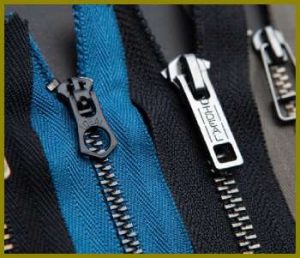

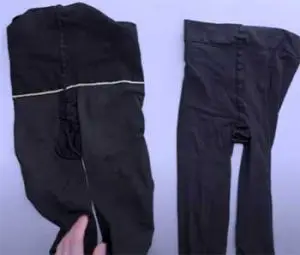
Hi Clayton,
Duckfeet also make shoes and sandals. They also make wool-lined versions of their boots for colder weather.